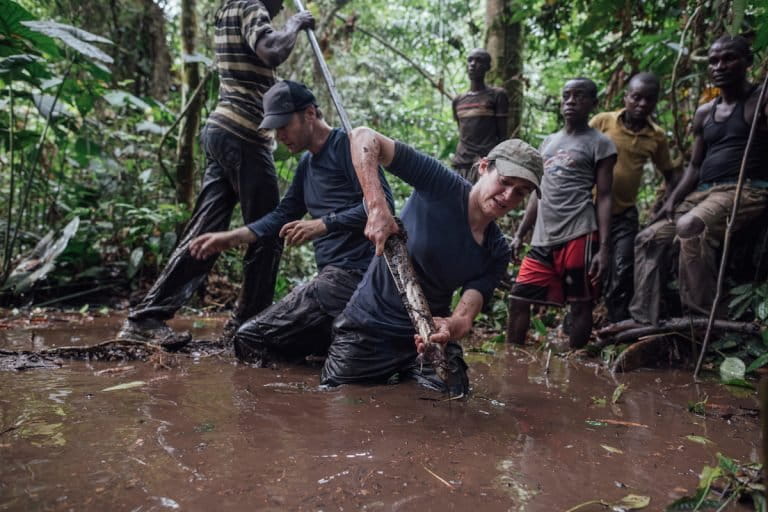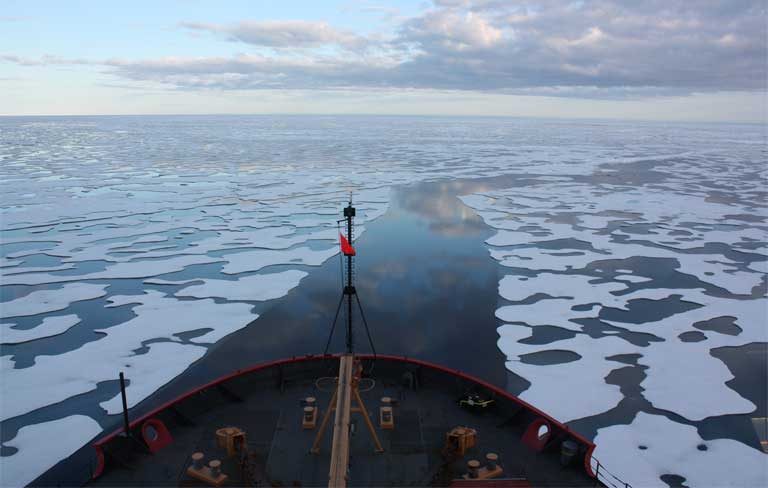- In 2017 Mongabay published more than 1,300 stories in English (and over 4,100 across all languages).
- We averaged 2.7 million monthly visitors to our news content this year.
- Total readership amounted to 56 million pageviews.
- Each of our top 10 English stories published in 2017 was written by a different author. We had more than 250 authors during the year.
We published more than 1,300 stories in English in 2017.
Here are our ten most read articles that were published during the year.

10. Much deeper than we expected’: Huge peatland offers up more surprises
John Vidal wrote about his field visit to a massive peatland that was recently discovered in the Congo Basin. Roughly the size of England, the massive peatland is estimated to contain more than 30 billion metric tons of carbon — equivalent to three years of global fossil fuel emissions.

9. India and Nepal team up to rescue flooded rhinos
A story by Moushumi Basu was the most read in our popular “Asian rhinos” series in 2017. The article detailed efforts to rescue endangered greater one-horned rhinoceroses (Rhinoceros unicornis) that were swept across the Indo-Nepal border from Nepal’s Chitwan National Park to India’s adjoining Valmiki Tiger Reserve during this year’s monsoon floods.

8. Newly discovered gecko loses scales in ‘really bizarre’ behavior
Benji Jones covered the discovery of a previously unknown species of “fish-scaled” gecko from Madagascar: Gecklolepis megalepis. Fish-scaled geckos are notable for their defense strategy, which involves shedding scales when nabbed by a predator.

7. Merabu’s efforts to keep the carbon in its trees
Yustinus S. Hardjanto wrote a story on the ecovillage of Merabu for Mongabay-Indonesia’s Forest Guardians series, which profiles local community-managed forest projects. Melati Kaye adapted the post into English.

6. At 2017 minimum, scientists ask: Is Arctic entering the Thin Ice Age?
Gloria Dickie wrote about the ongoing decline of Arctic sea ice, noting that 2017 had the lowest summer ice volume ever recorded.

5. 2 new reptiles discovered in Sumatra
In June, scientists described two species of reptiles from Sumatra: Lycodon sidiki, a Colubrid snake, and Pseudocalotes baliomus, an agamid lizard. Reza Septian covered the story for Mongabay-Indonesia. Basten Gokkon adapted it into English.

4. A rich person’s profession? Young conservationists struggle to make it
Jeremy Hance‘s feature covered the challenges facing young conservationists, including lack of paid opportunities and high education costs. Hance wrote: “As a result of these trends, the field of conservation may be hemorrhaging passionate, qualified, and innovative young people.”

3. Camera trapping in the trees
Sue Palminteri‘s story about arboreal camera trapping was the most popular Wildtech story of the year.

2. Meet the new giant sunfish that has evaded scientists for centuries
In July, scientists announced the discovery of a new species of sunfish. They named it Mola tecta — the species name meaning disguised or hidden, since it was only distinguished from other sunfish after DNA analysis. Shreya Dasgupta‘s story on the discovery was the second most popular of 2017.

1. Namibia’s low cost, sustainable solution to seabird bycatch
William H. Funk‘s story about Namibia’s effort to reduce accidental take of seabirds by the fishing industry received over 300,000 pageviews. Namibia has implemented anti-bycatch mechanisms like “bird-scaring” lines which in neighboring South Africa have reduced seabird bycatch by 90 percent.